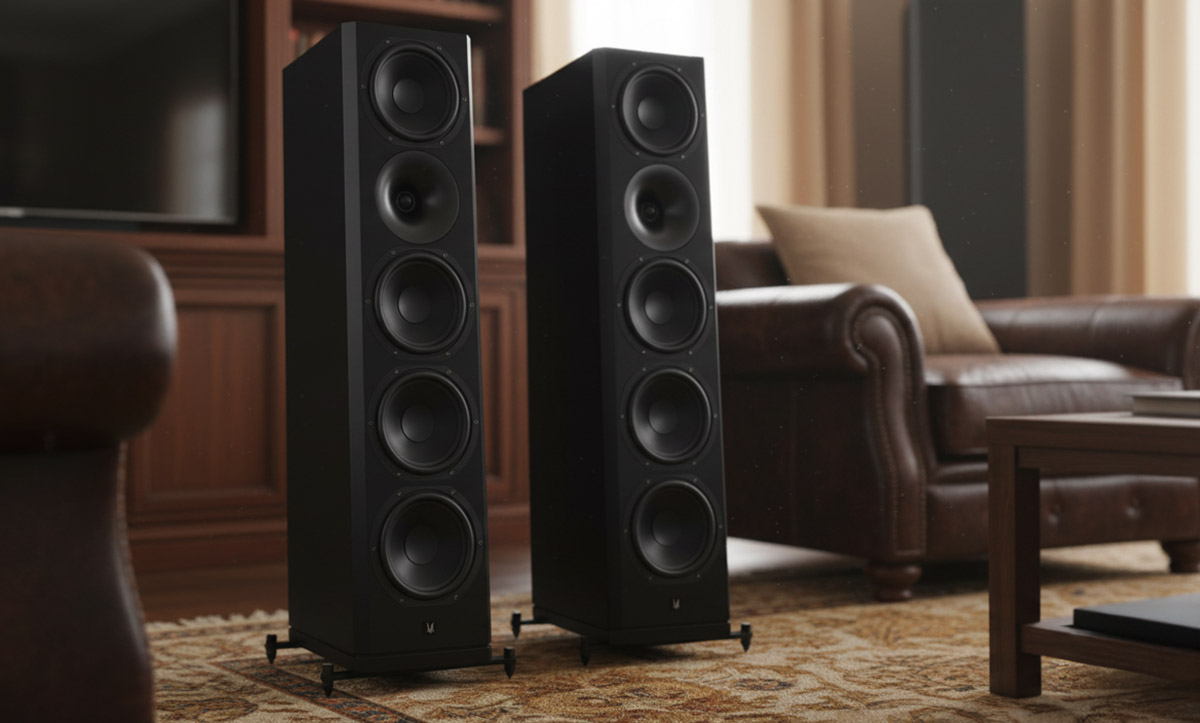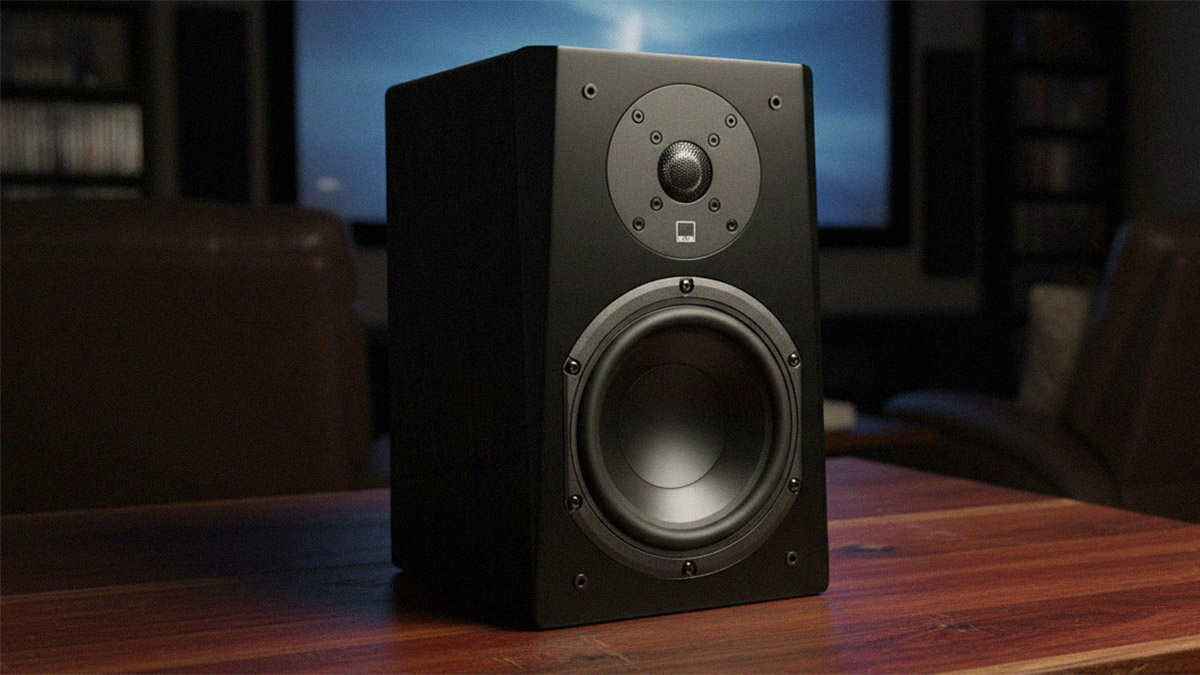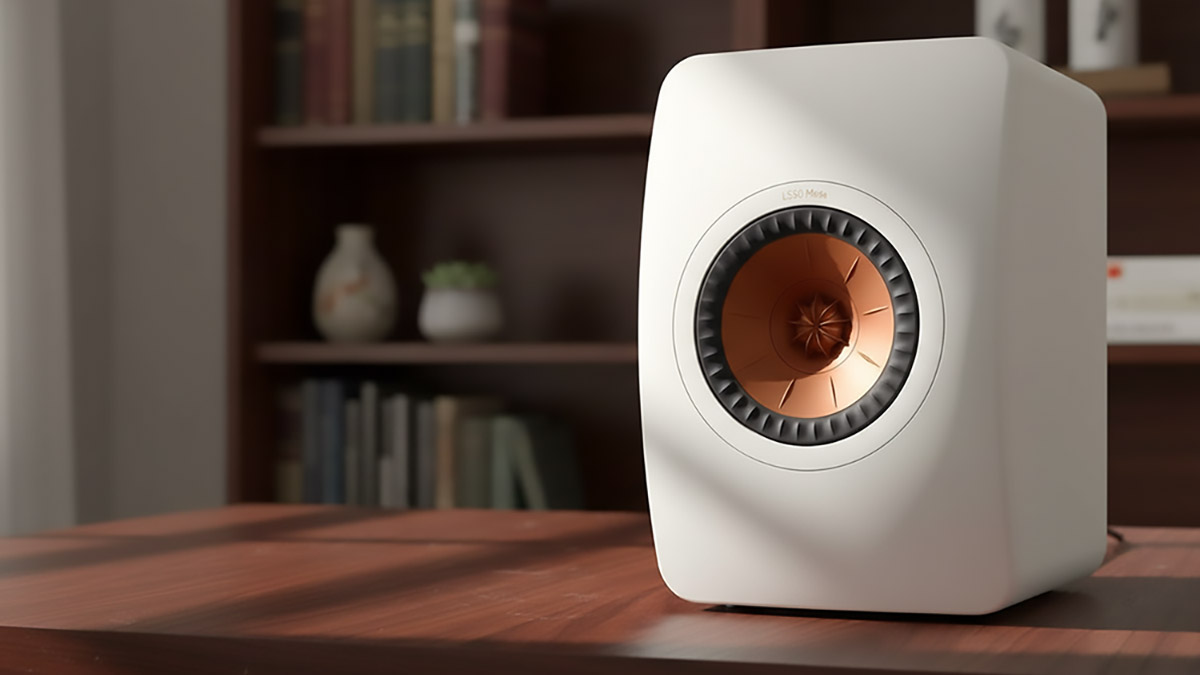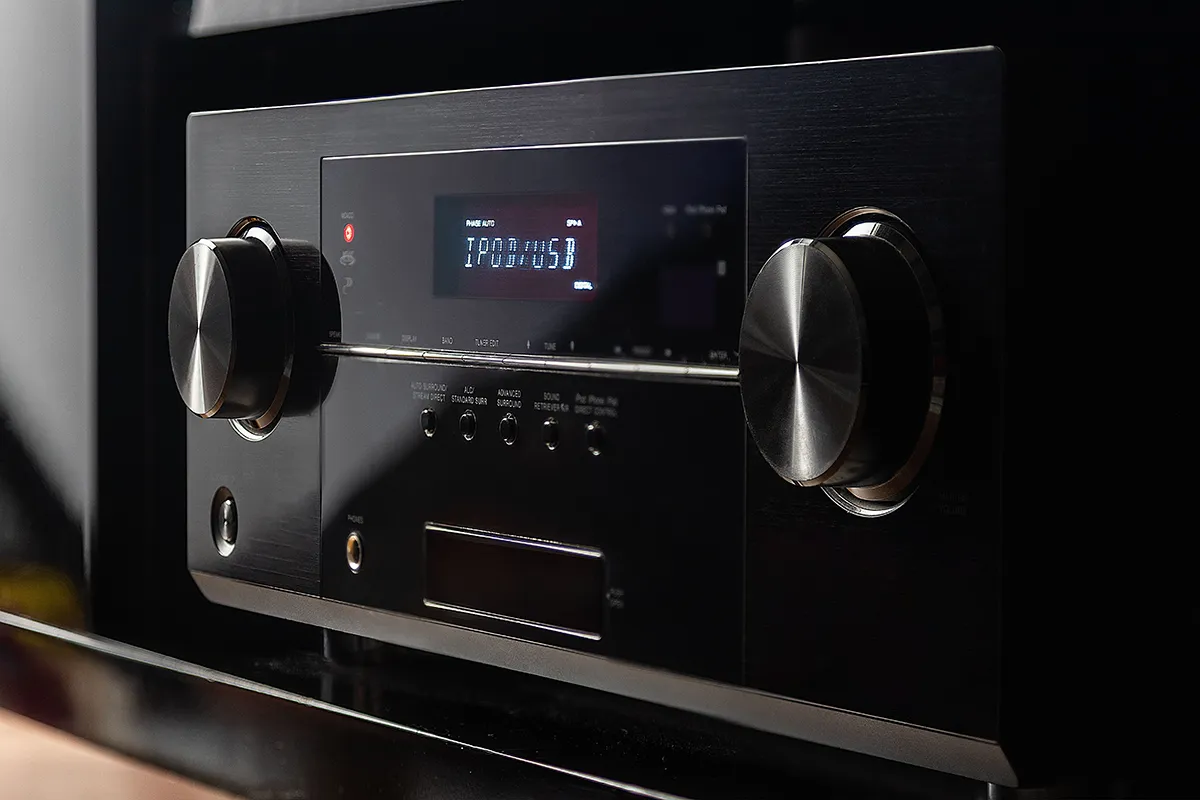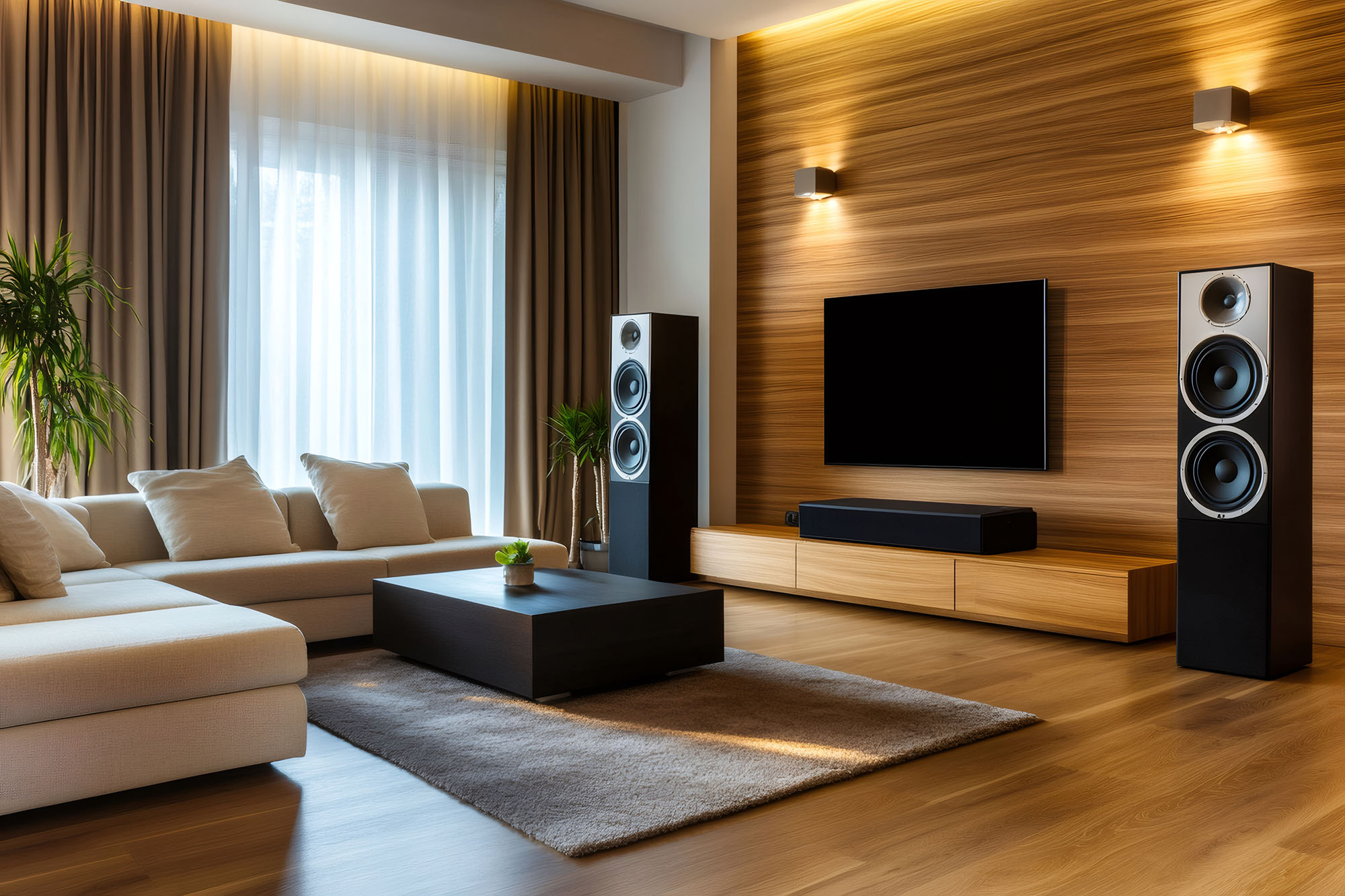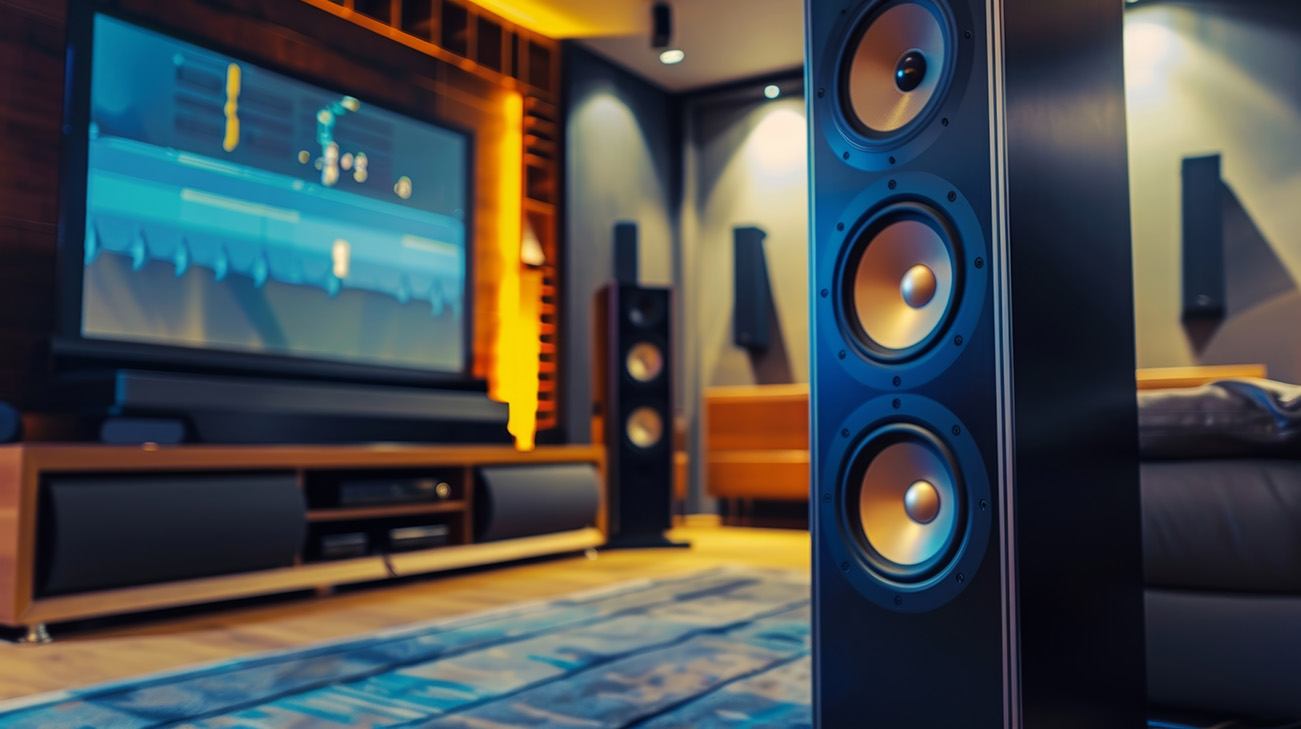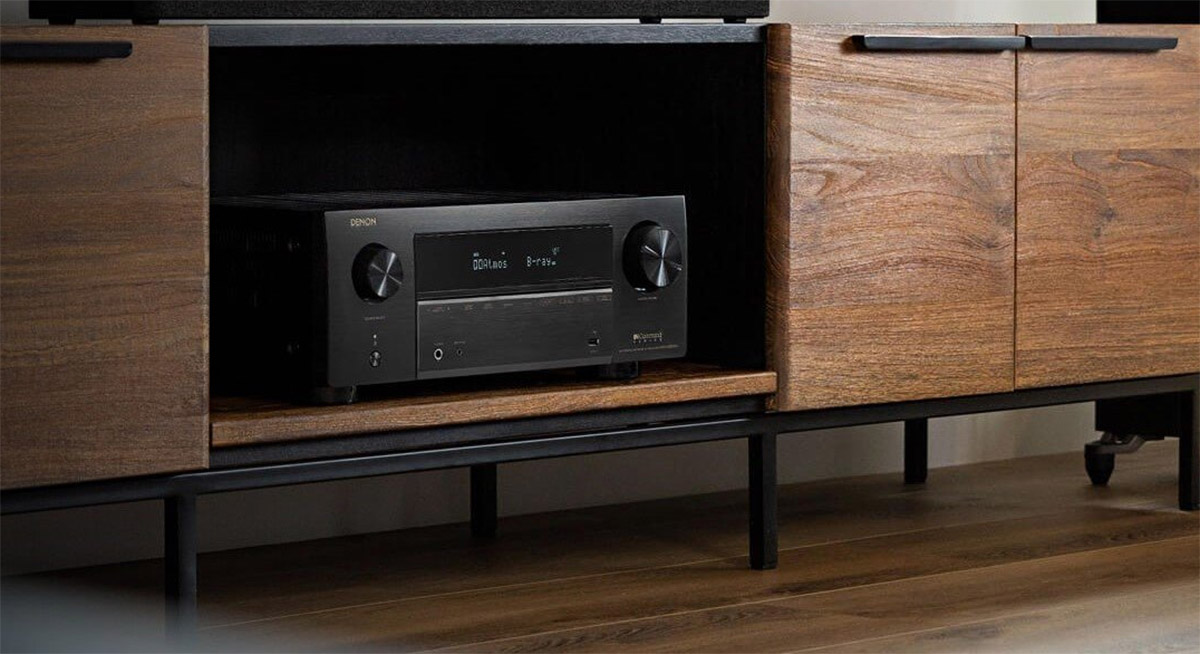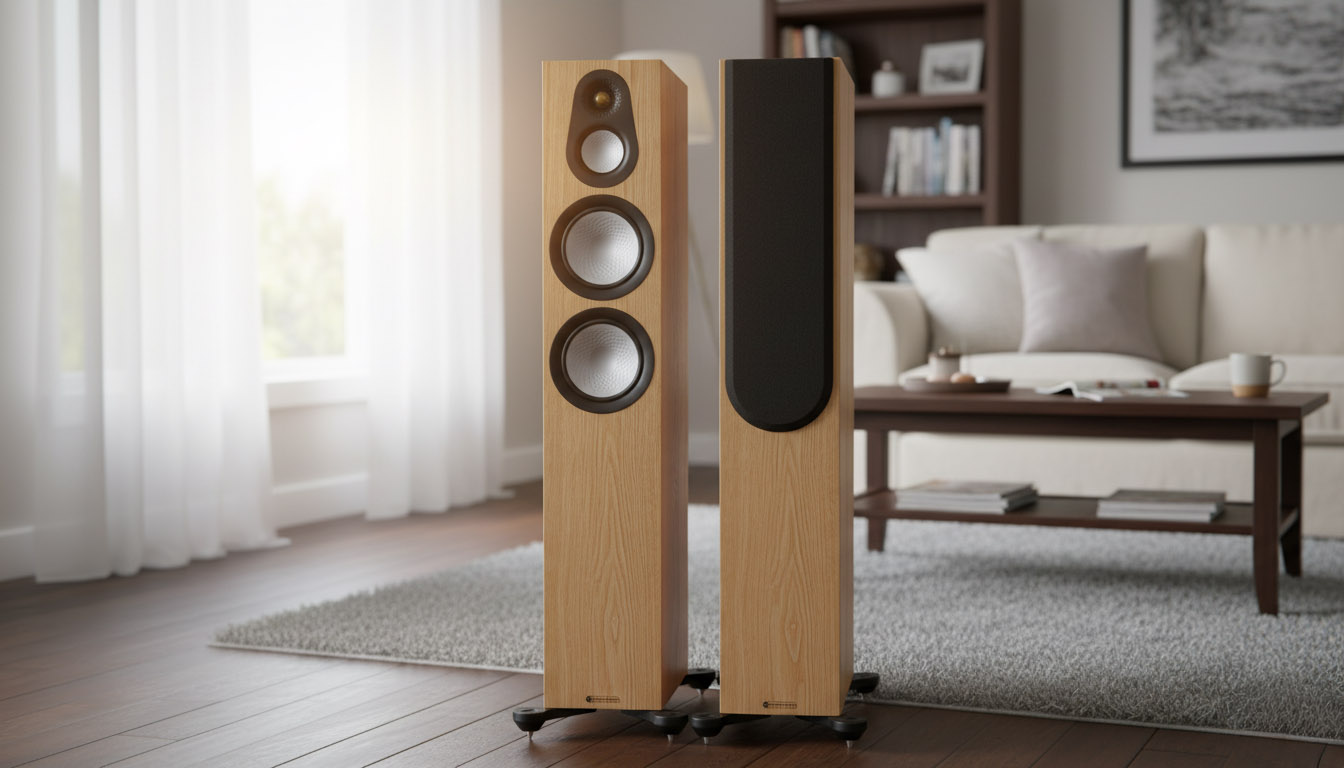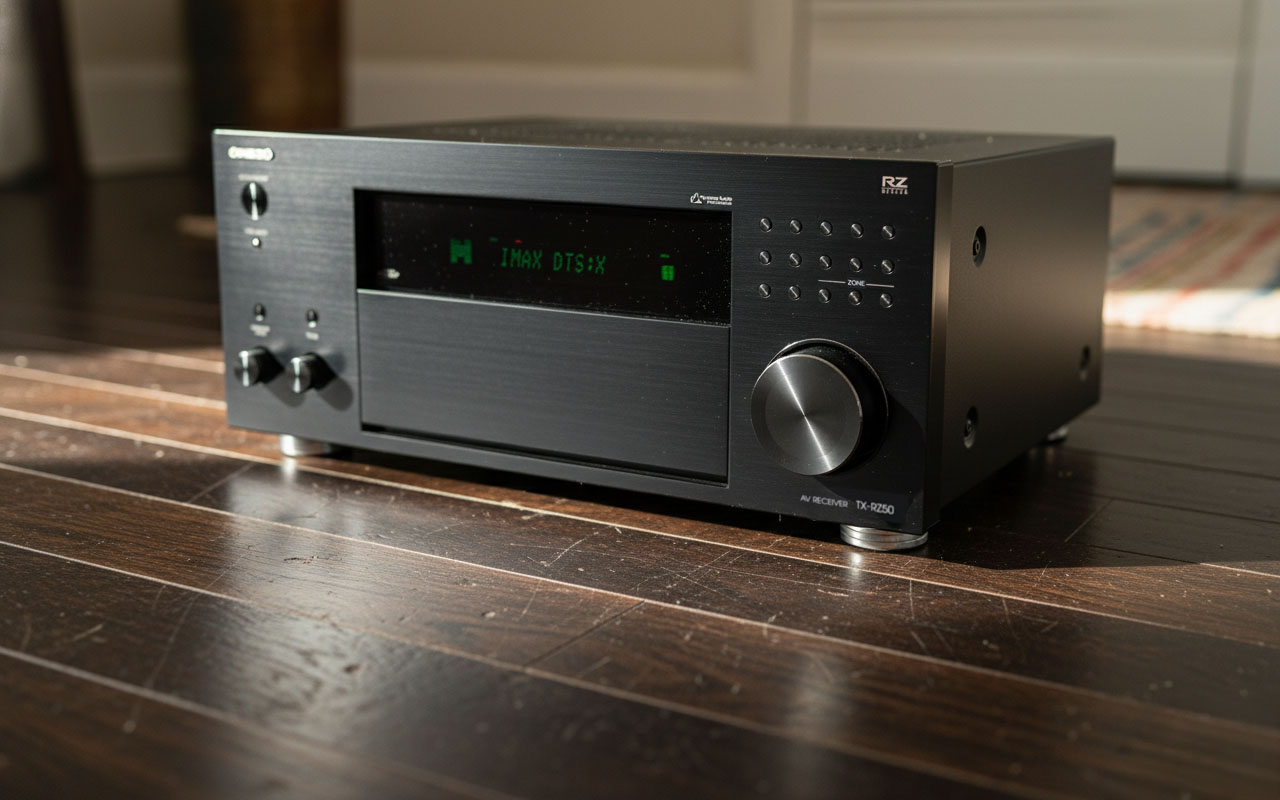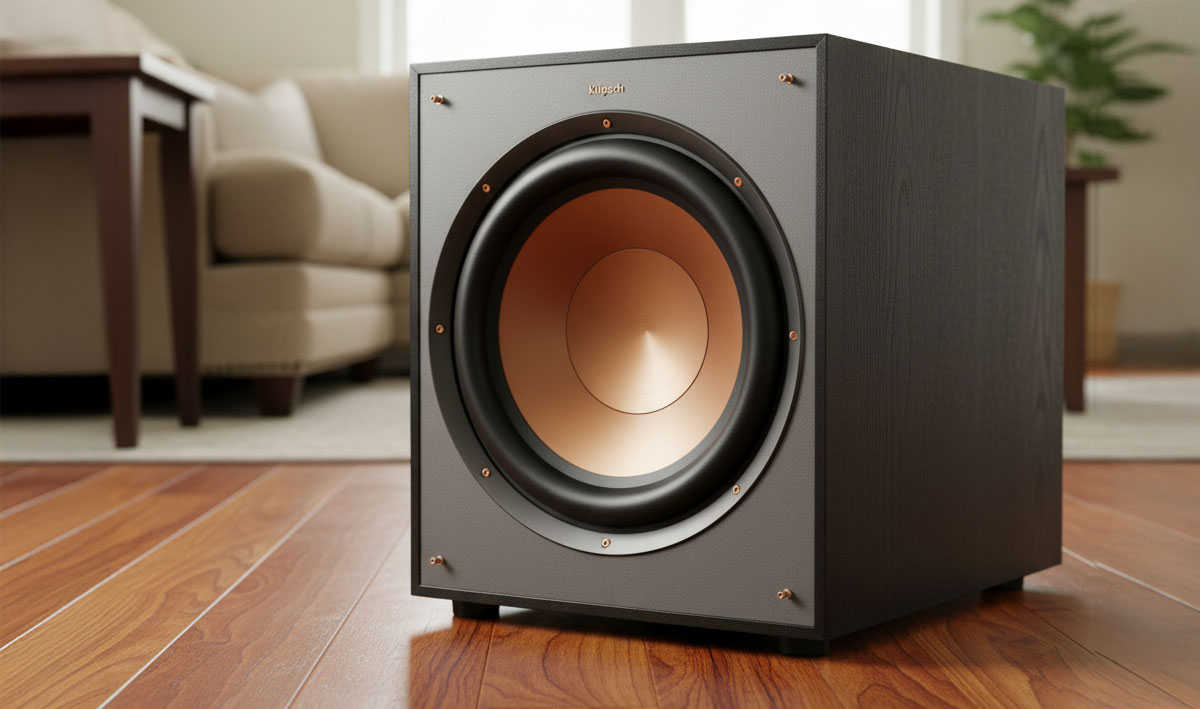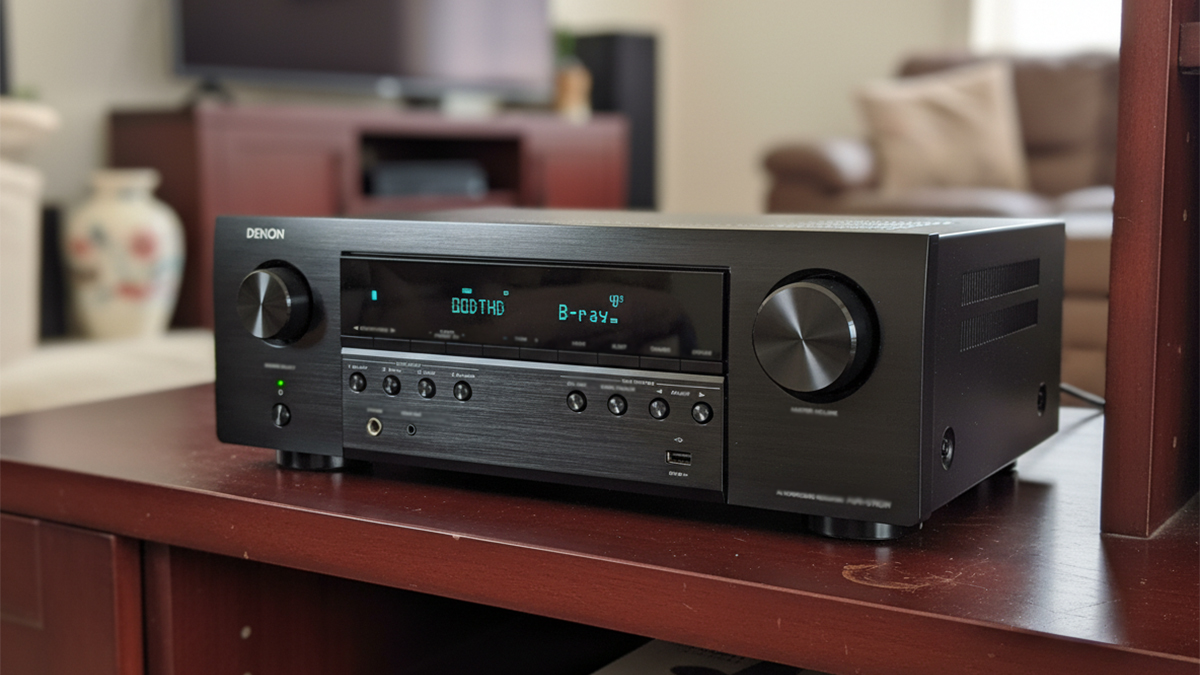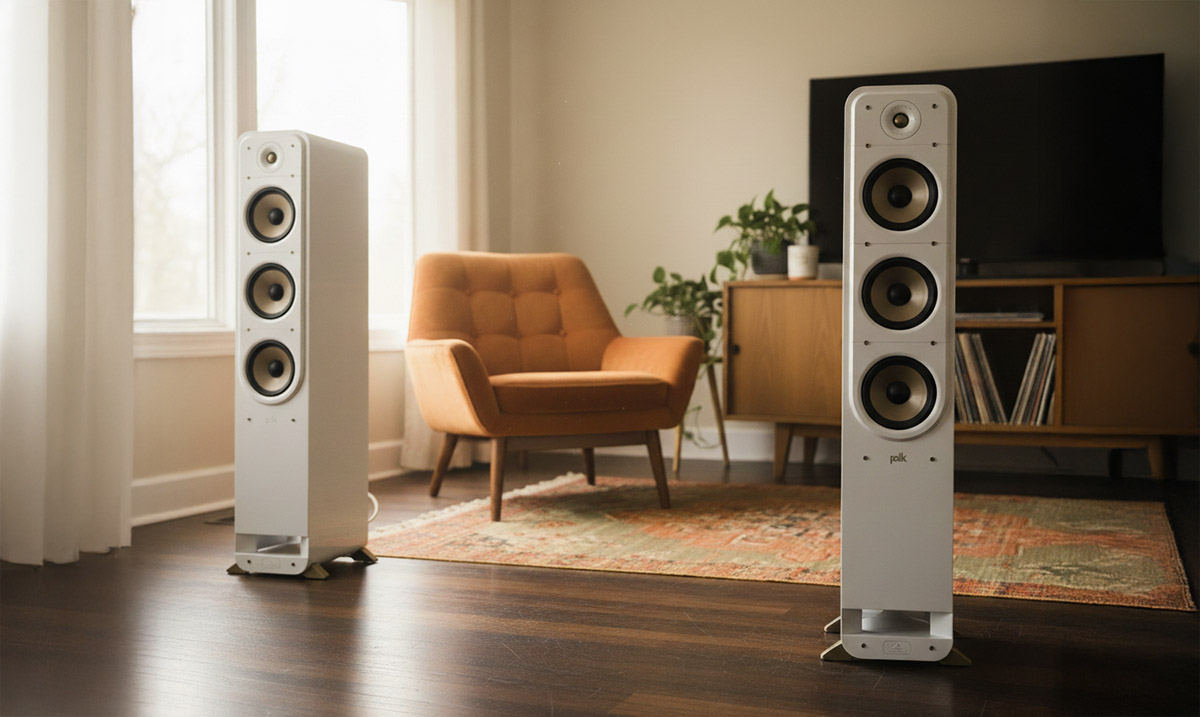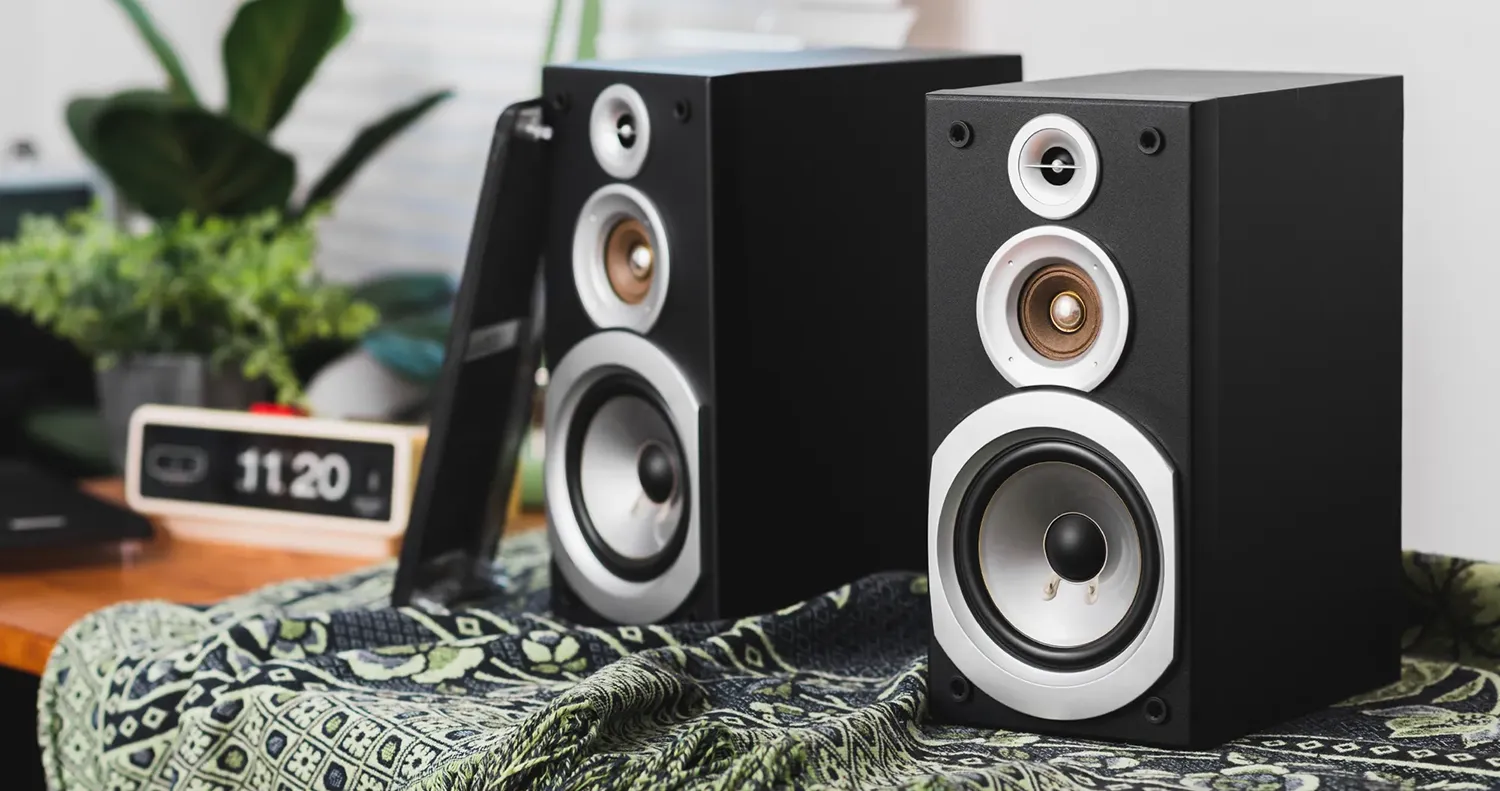So you want the big, handsome towers. Floorstanding speakers bring authority, deeper bass, and a wider soundstage than most bookshelf models. The catch is not just budget, it is the room. A tower that sings in a roomy lounge can feel pushy in a studio apartment, while a slim pair can run out of steam in a vaulted family room. Let’s map the decision with clear numbers, practical tips, and a few solid model suggestions.
Start with your room volume, not only the floor area. Multiply length by width by height, and you have cubic feet. For simplicity, think of three bands. Small rooms under about 1500 cubic feet, medium rooms from roughly 1500 to 3000, and large rooms above 3000. The main reason to think in volume is that air is load. Bigger air wants more displacement from woofers and more clean power from the amplifier if you want cinema like dynamics. That does not mean you must listen at reference level. It does mean the gear has enough headroom to stay composed when things get loud.
Now consider how loud you really listen. Movies are mixed around 85 dB at the seat with about 20 dB of headroom for peaks in commercial rooms. Homes rarely need that full blast, and many listeners cruise 10 to 20 dB under. Still, understanding the target helps you judge if a speaker can do the job in your space. Getting clean 105 dB peaks at the seat takes serious output. That is why sensitivity, amplifier power, and distance matter, and why a tower that looks similar on paper can behave very differently in your room.
Distance is a quiet villain. The sound level from a speaker drops as you move away. In open space, each doubling of distance costs about 6 dB, while real rooms reduce that loss somewhat thanks to reflections and boundaries. The practical takeaway is simple. If your main seat is far from the speakers, and your room opens into other spaces, you need either higher sensitivity speakers, more amplifier, or both. That is one major reason larger rooms tend to favor towers with multiple woofers or horns.
Room shape matters as much as size. Square rooms and rooms where dimensions share common multiples tend to bunch bass into a few boomy notes and suck the life out of others. That problem comes from standing waves, also called room modes. While you cannot change a condo’s bones easily, you can avoid worst case layouts when you have a choice. Ratios near height, width, length of about 1, 1.6, and between 2.3 and 2.6 tend to spread those modes more evenly, which helps the bass feel smoother. If you want to visualize what your dimensions will do, plug them into a room mode calculator and you will see which frequencies are likely to pile up.
Not every acoustic metric translates cleanly to homes. You might read about decay time and wonder if you should tune to a number. In small domestic rooms the concept starts to break down at low frequencies because the sound field is not diffuse. Treat decay time as a rough guide for the mid and high bands, not a law. Bass behavior is dominated by modes, placement, and subwoofers.
Small rooms under about 1500 cubic feet
A compact tower works best. You want good bass extension without picking a speaker that overwhelms the space. Examples include the KEF Q550, ELAC Uni Fi Reference UFR52, and SVS Prime Tower. They keep footprint and woofer area reasonable, yet still give you that tower scale. Sit about 7 to 9 feet from the speakers if possible, keep the tweeters at ear height when seated, and begin with about 12 to 24 inches from the back wall. That small pull from the wall often sharpens the imaging and reduces one note bass. If you sit closer than 7 feet or the room is very lively, consider a high quality bookshelf on sturdy stands with a measured subwoofer. The bookshelf option is not a step down. Done right, it gives cleaner bass control in a tight space and reduces visual bulk. Guidance on seated ear height places the front stage around 3.9 feet off the floor, which is a handy check when you are dialing in stands and risers.
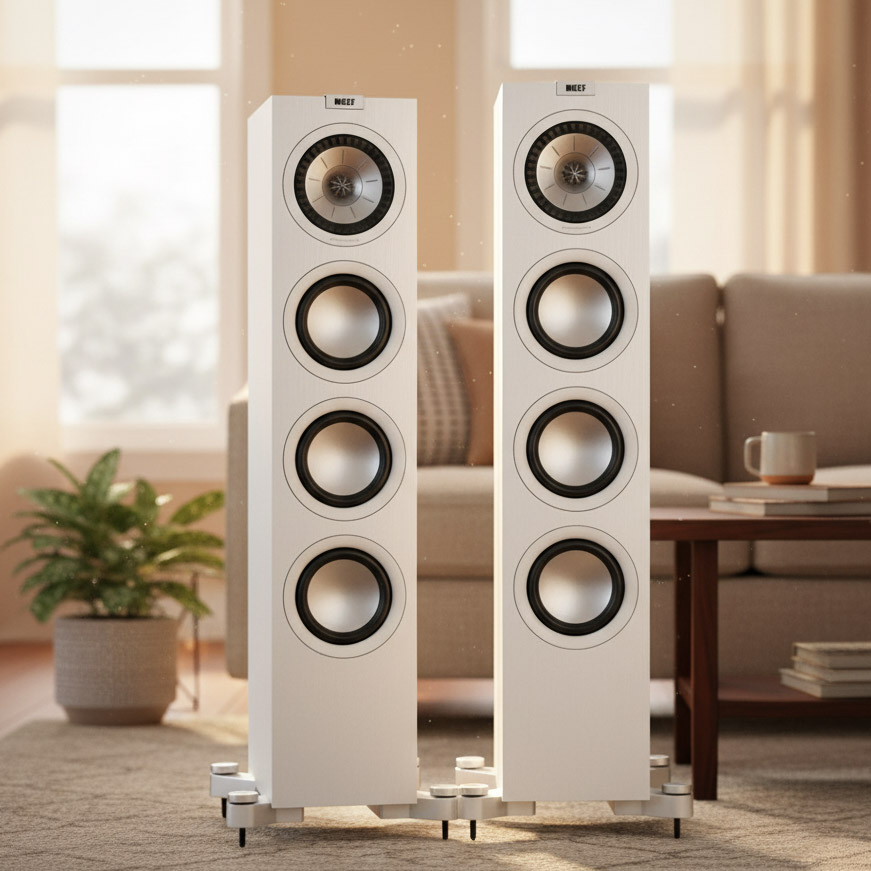
Medium rooms around 1500 to 3000 cubic feet
Here you have more freedom. Popular all rounders like the Polk R700, KEF R5 Meta, and Monitor Audio Silver 300 can fill a mid size family room without stress, especially when paired with a capable subwoofer crossed near 80 Hz. If you crave higher dynamics for movies or live music, set your sights on speakers with higher sensitivity and stronger motors. Distance to seat often stretches toward 9 to 12 feet in this band, so you will be happier with speakers that maintain composure and dispersion across that span. Use toe in to aim the tweeters just past your ears for a wide center image. Pull the speakers out from the wall until voices focus and bass tightens, then nudge them an inch at a time to balance punch with depth.
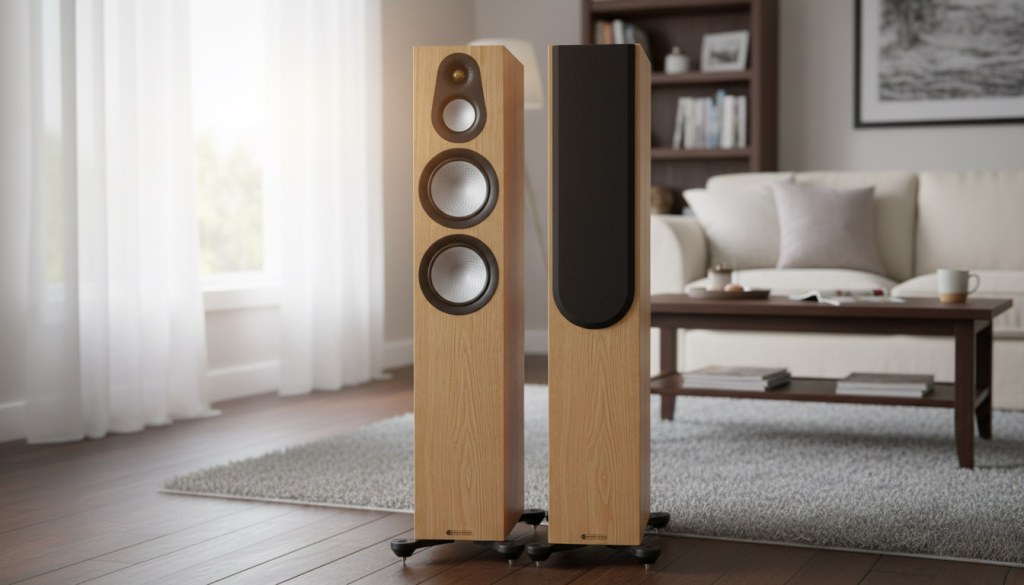
Large rooms above 3000 cubic feet
Big air rewards large radiating area and efficiency. Think Klipsch RF 7 III, JBL HDI 3800, or Arendal 1723 Tower. Horn loaded designs and multiple large woofers keep distortion low and dynamics lively at longer distances. If you have open plan space or tall ceilings, strongly consider dual subwoofers to even out bass across seats. Crossing the towers a bit higher takes heavy lifting out of the mains, which improves clarity at party levels. When the room is truly cavernous, use performance envelopes like those associated with reference level playback as a north star. They were created for rooms this size and give you a sense of the capability needed to hit cinema like levels with headroom.
A few setup pointers stretch across all sizes. First, get the front stage to ear height when seated. That simple alignment does more for clarity than exotic cables ever will. Second, start with an equilateral triangle between the two speakers and your main seat, then adjust by ear. Third, integrate a good subwoofer. Offloading deep bass from towers lowers distortion and lets you place bass sources where the room likes them. Fourth, measure if you can. A basic USB microphone with free software will show you where bass peaks and nulls sit, so you can slide the speakers or the sub a foot and hear a real difference rather than guessing. Finally, treat the first reflection points on the side walls with broadband panels if the room sounds splashy. You will get a more precise center image and sharper transients. The idea is to tame early reflections while letting later ones provide a sense of space.
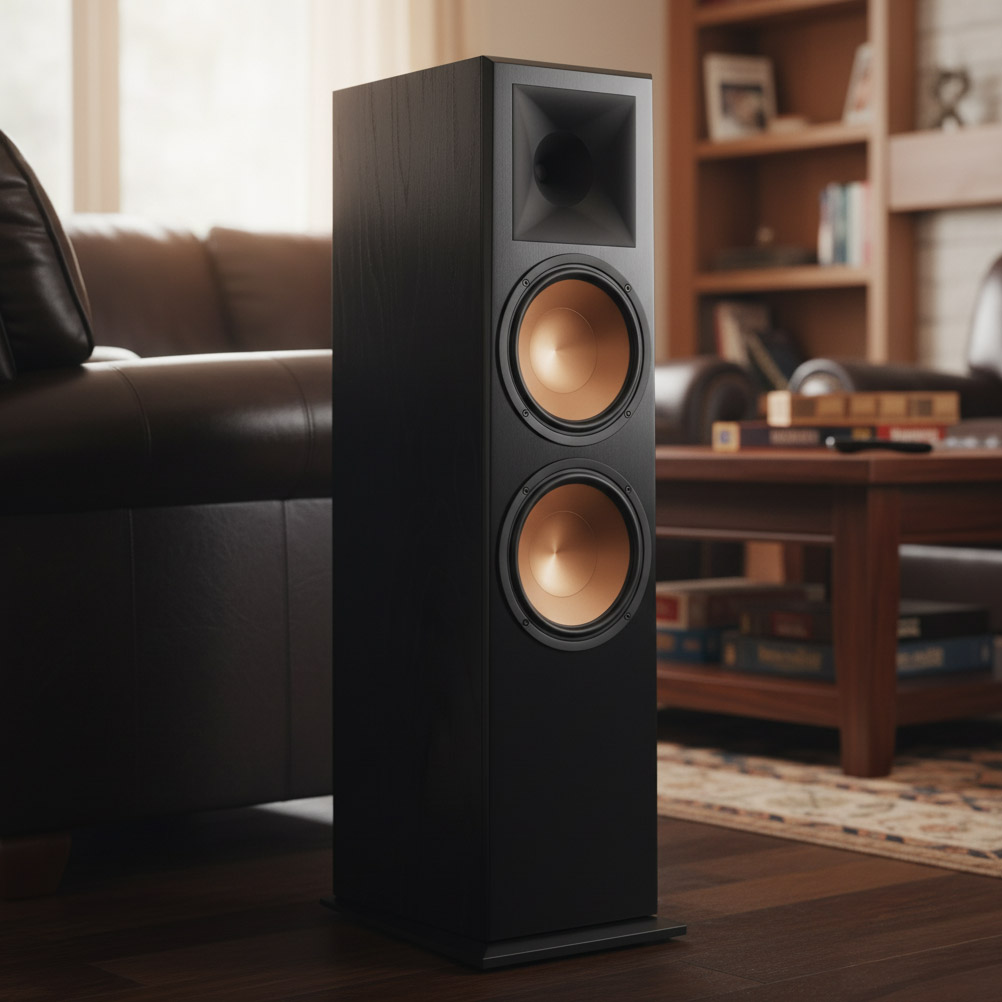
How to choose based on sensitivity and distance
One practical rule. If your main seat is far away, or you like spirited playback, choose higher sensitivity towers and give them real power. You lose a chunk of level as you back up, and while reflections in a room soften the loss compared with empty space, the effect is still there. Two speakers with the same bass spec can feel very different in a long room because the higher sensitivity design stays relaxed where the other strains.
Real world examples to match the bands
Small room
About 12 by 13 by 8 feet. KEF Q550 or ELAC UFR52 with a compact sealed sub. Place the speakers 18 inches off the wall to start, seat around 8 feet away, and use modest toe in until vocals lock to the center.
Medium room
About 14 by 18 by 9 feet. Polk R700 or KEF R5 Meta with a 12 inch ported sub. Seat about 10 feet back. If bass bunches up, try a room mode calculator to see which wall distance avoids a modal hot spot, then slide the speakers a few inches to land in a smoother zone.
Large room
About 18 by 24 by 10 feet. JBL HDI 3800 or Klipsch RF 7 III with dual 15 inch subs. Cross at 80 Hz, and consider amplification that can swing current without drama. If you want a receiver for big rooms, look for products designed for higher output goals similar to those used in theater style systems.
One last myth check
There is a temptation to choose towers only by published low frequency numbers. Don’t. In rooms this size, bass smoothness and headroom matter more than a catalog figure. Placement, room ratios, and sub integration decide the shape of the bass you actually hear. If you want a deeper dive into how rooms shape your low end, use a room mode tool and look at the clusters. You will learn more in five minutes of plotting than in five hours of spec sheet browsing.
Bottom line
Pick floorstanding speakers to match room volume, distance to seat, and how loud you enjoy listening. Small rooms do best with compact towers or bookshelves plus a sub. Medium rooms love balanced, full range towers with one or two subs for even bass. Large rooms call for efficient, higher output designs and real amplifier muscle, along with dual subs to smooth the lows. Mind ear height and placement, use measurement when you can, and let your room shape the final decisions. Follow those steps and your towers will feel sized just right, the way a good suit fits without a single wrinkle.
Teksignal.com participates in the Amazon Services LLC Associates Program, an affiliate advertising program designed to provide a means for sites to earn advertising fees by advertising and linking to Amazon.com

